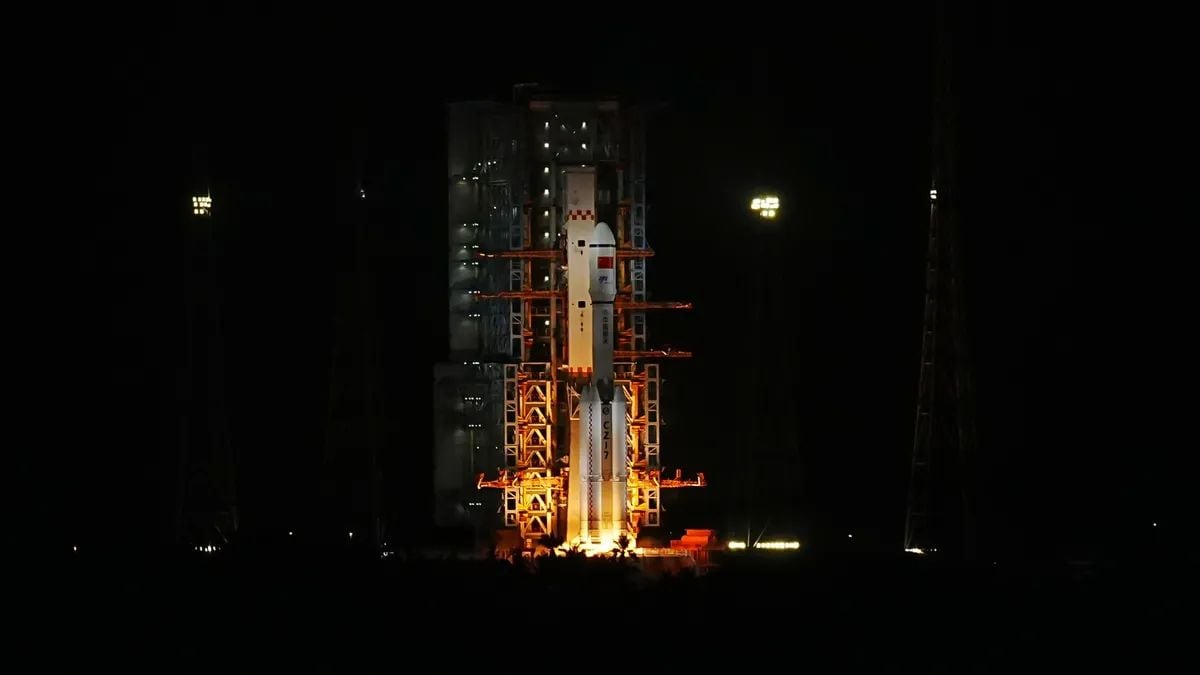Scientists Find New World in Solar System, Share New Insight and Evidence
Astronomers have identified a rare celestial object orbiting the outermost reaches of the solar system, casting fresh doubt on the long-standing theory of a hidden ninth planet.
The icy body, officially named 2023 KQ14 and nicknamed Ammonite, was spotted by researchers using the Subaru Telescope in Hawaii. It lies approximately 71 times farther from the Sun than Earth, well beyond the orbit of Pluto.

Source: Getty Images
The discovery was made as part of the Formation of the Outer Solar System: An Icy Legacy (FOSSIL) survey, a project aimed at uncovering ancient remnants of the solar system’s formation.
Scientists described Ammonite as a cosmic “fossil,” preserving clues from the solar system’s earliest days.
Ammonite belongs to a rare class of objects known as sednoids, small, icy bodies that reside in the outer solar system.
These objects share similarities with Kuiper Belt rocks and tiny planets like Pluto but follow highly elongated orbits that remain stable over billions of years.
To date, only four sednoids have been identified, making Ammonite a significant addition to this exclusive group.
Researchers found that Ammonite’s orbit had remained similar to other sednoids for roughly 4.5 billion years.
However, its trajectory has mysteriously shifted over time, suggesting that the outer solar system may be more dynamic and complex than previously believed.
The unusual orbit of Ammonite has prompted scientists to reconsider the existence of the hypothetical Planet Nine, a massive planet theorised to be lurking far beyond Pluto.
For years, astronomers have used the Planet Nine theory to explain the strange clustering and tilted orbits of objects in the Kuiper Belt.
However, Ammonite’s orbit does not align with predictions made by Planet Nine models. This discrepancy has led researchers to propose alternative explanations, including the possibility that a planet once existed in the solar system but was later ejected.
“It is possible that a planet once existed in the solar system but was later ejected, causing the unusual orbits we see today,” said Dr Yukun Huang from the National Astronomical Observatory of Japan.
Planetary scientist Fumi Yoshida noted that Ammonite was discovered in a region of space far beyond Neptune’s gravitational influence.
“The presence of objects with elongated orbits and large perihelion distances in this area implies that something extraordinary occurred during the ancient era when 2023 KQ14 formed,” Yoshida explained.
The FOSSIL team hopes that Ammonite is just the beginning of a wave of discoveries that could reshape our understanding of the solar system’s history.
“I would be happy if the FOSSIL team could make many more discoveries like this one and help draw a complete picture of the history of the solar system,” Yoshida added.
Until recently, astronomers had narrowed down 13 candidates for Planet Nine to a single object believed to be orbiting the Sun between 46.5 billion and 65.1 billion miles away, nearly 20 times farther than Pluto.
NASA has supported the theory, suggesting that Planet Nine could explain the tilted orbits of Kuiper Belt objects and the clustering of comets and dwarf planets.
“It could also make our solar system seem a little more ‘normal’,” NASA said in a breakdown of the theory. “Surveys of planets around other stars in our galaxy have found the most common types to be ‘super Earths’ and their cousins — bigger than Earth, but smaller than Neptune. Yet none of this kind exist in our solar system. Planet Nine would help fill that gap.”
Despite its appeal, the discovery of Ammonite has complicated the narrative. If Planet Nine does exist, scientists now believe it would need to be even farther from the Sun than previously thought or perhaps it was ejected from the solar system altogether.
The identification of Ammonite marks a turning point in the study of the solar system’s outer frontier.
As astronomers continue to search for more “icy fossils,” the findings may not only challenge existing theories but also uncover new ones, offering a deeper glimpse into the ancient forces that shaped our cosmic neighbourhood.

Source: Getty Images
Legit.ng earlier reported that in a finding published in the journal Astronomy & Astrophysics recently, a 'super-Earth' planet was found outside of the solar system that could have conditions suitable for life.
According to experts at the University of Oxford, the planet known as HD 20794 d has a mass six times greater than Earth's and orbits within the 'habitable zone' of a star similar to the sun.
Located 20 light-years away, scientists believe that HD 20794 d could be at an optimal distance from its nearest star to sustain water on its surface.
PAY ATTENTION: Сheck out news that is picked exactly for YOU ➡️ find the “Recommended for you” block on the home page and enjoy!
Source: Legit.ng
You may also like...
Diddy's Legal Troubles & Racketeering Trial

Music mogul Sean 'Diddy' Combs was acquitted of sex trafficking and racketeering charges but convicted on transportation...
Thomas Partey Faces Rape & Sexual Assault Charges

Former Arsenal midfielder Thomas Partey has been formally charged with multiple counts of rape and sexual assault by UK ...
Nigeria Universities Changes Admission Policies

JAMB has clarified its admission policies, rectifying a student's status, reiterating the necessity of its Central Admis...
Ghana's Economic Reforms & Gold Sector Initiatives

Ghana is undertaking a comprehensive economic overhaul with President John Dramani Mahama's 24-Hour Economy and Accelera...
WAFCON 2024 African Women's Football Tournament

The 2024 Women's Africa Cup of Nations opened with thrilling matches, seeing Nigeria's Super Falcons secure a dominant 3...
Emergence & Dynamics of Nigeria's ADC Coalition

A new opposition coalition, led by the African Democratic Congress (ADC), is emerging to challenge President Bola Ahmed ...
Demise of Olubadan of Ibadanland
Oba Owolabi Olakulehin, the 43rd Olubadan of Ibadanland, has died at 90, concluding a life of distinguished service in t...
Death of Nigerian Goalkeeping Legend Peter Rufai

Nigerian football mourns the death of legendary Super Eagles goalkeeper Peter Rufai, who passed away at 61. Known as 'Do...




